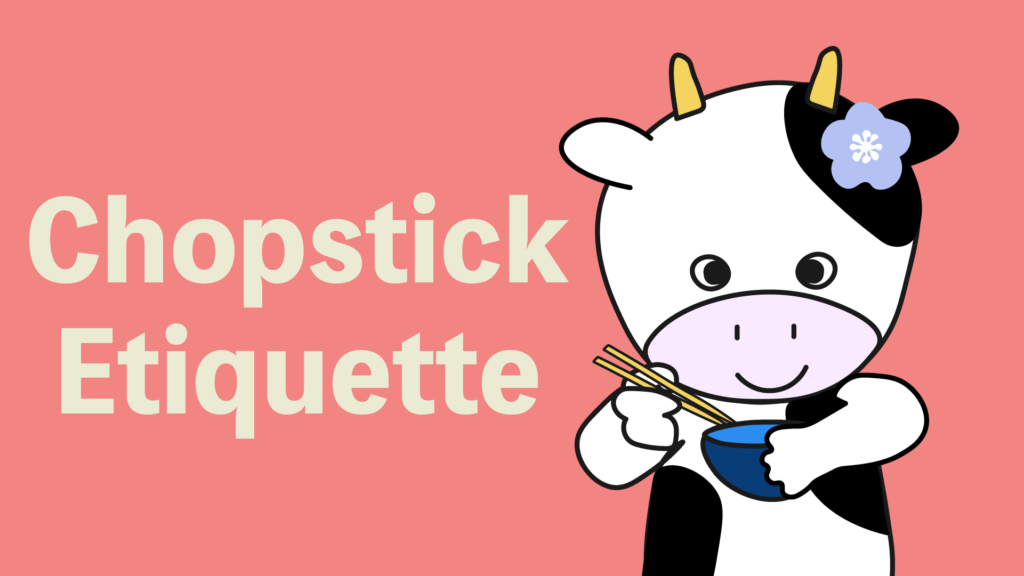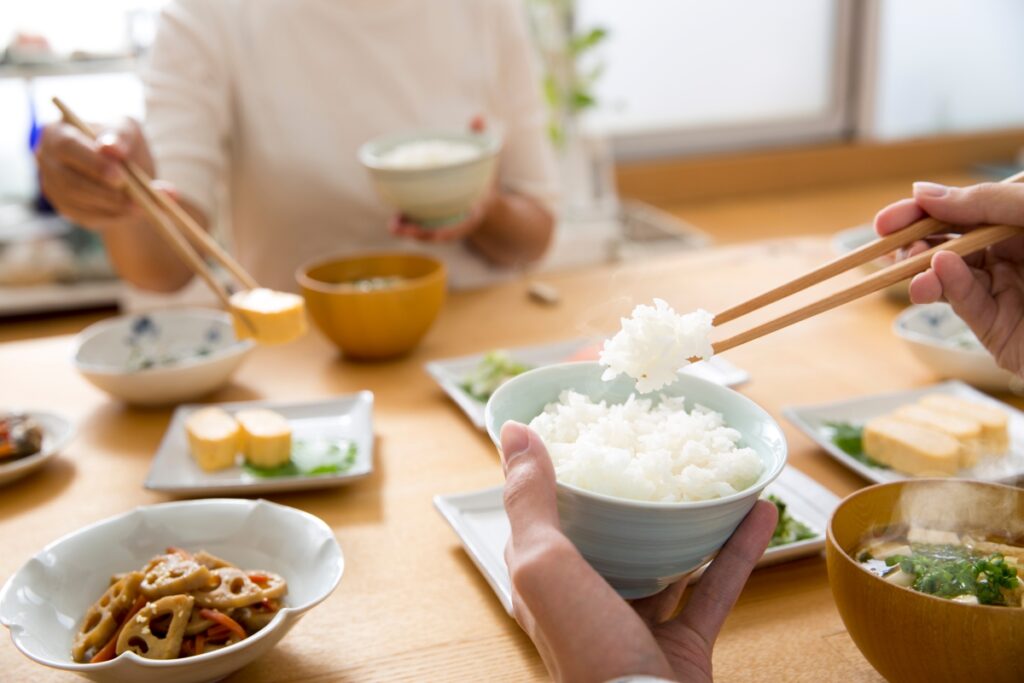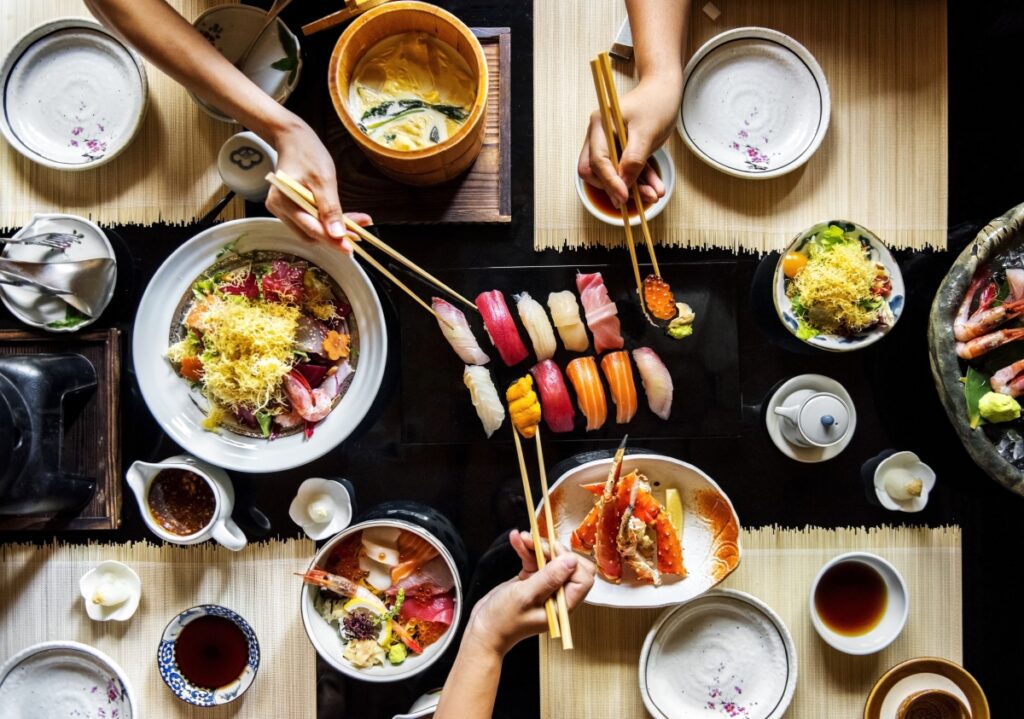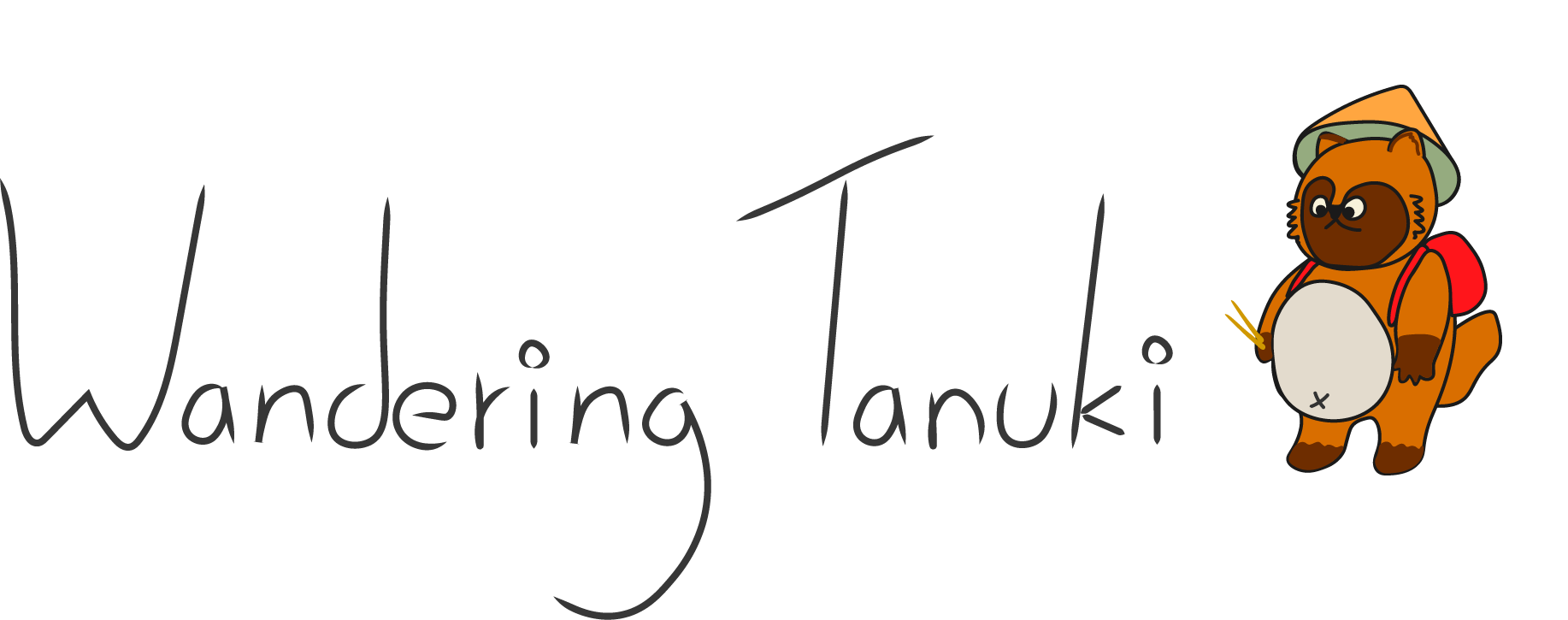Chopstick Etiquette in Japan: Rules you need to know!
Just like in the west, table manners are very important in Japanese culture. In particular, there are a whole bunch of rules for chopstick etiquette in Japan.

If you find yourself in Japan, you should make sure to know some of these rules. It can be considered rude if you use your chopsticks incorrectly. Keep in mind that even Japanese people can be guilty of doing some of these things!
Important chopstick etiquette rules:
Japanese people have put special names to the mistakes you can make when using chopsticks. These are impolite so avoid doing them!

yose bashi – 寄せ箸
This is when you move dishes using your chopsticks. This is considered impolite so make sure to use your hands to move the dish instead of the chopsticks.
neburi bashi – ねぶり箸
You shouldn’t put the chopsticks in your mouth and chew or suck on it. It can make other people uncomfortable. Try to avoid this even if there’s a delicious sauce on it.
utsuri bashi – 移り箸
It’s possible you’ll change your mind while deciding what to eat next. However, make sure not to touch your chopsticks to one food and then move on to another dish without eating it. Once you touch a food with your chopsticks, you should eat it.
mogi bashi – もぎ箸
If there’s something stuck to your chopstick like sticky rice, don’t use your teeth to get it off. This can look bad. Try to get it off some other way.
sashi bashi – 刺し箸
It’s tempting to use chopsticks like a fork, but you should never pierce food with it. This makes it seem like you’re immature and don’t know how to use chopsticks.
furiage bashi – 振り上げ箸
This is when you point to people or objects with your chopsticks. Since chopsticks are long and pointy, it can seem like the perfect tool to point at things. Unfortunately, this is rude and should be avoided.
namida bashi – なみだ箸
Make sure not to have food that is dripping everywhere while holding it with your chopsticks. This term means “crying chopsticks”, and the dripping is like tears.
hane bashi – はね箸
This is when you’re purposefully putting aside the ingredients you don’t like with your chopsticks. In Japanese culture, it is considered immature to have likes and dislikes of food. Try to eat what’s given to you to show appreciation!
saguri bashi – 探り箸
If you’re eating a meal with lots of ingredients, like hot pot, it can be tempting to look for your favorite ingredients. However, digging through food with your chopsticks is considered rude and best to be avoided.
tate bashi – 立て箸
This is when you put your chopsticks straight up into a bowl of rice. It is considered bad manners to do this because this is how food is offered to the dead.
awase bashi – 合わせ箸
If you eat something tasty, you might want others to try it. In this case make sure not to transfer the food from one chopsticks to another. It’s more polite to put it on the other person’s plate.
chigiri bashi – ちぎり箸
Avoid holding chopsticks individually in each hand. This term refers to when you use the chopstick in each hand inorder to shred or cut the food. It might be easier to do it this way but it can look immature.
kasane bashi – 重ね箸
This is when you keep eating the same food again and again with your chopsticks. It’s classier to eat all the different kinds of dishes on the table instead.
tataki bashi – 叩き箸
It can be tempting to use chopsticks like drum sticks, but it’s important to avoid hitting objects with it! This word refers to when someone uses chopsticks to hit bowls or glasses to call someone’s attention.
watashi bashi – わたし箸
This is something even Japanese people are guilty of doing. It is when you put your chopsticks on top of a bowl to rest it. It is better etiquette to put the chopsticks on a chopsticks holder or fold the chopstick envelope into a holder.
Chopstick etiquette when sharing dishes:
It’s common in Japan to order many types of dishes to share as a table. If you’re familiar with each other, people will tell you it’s ok to grab the food with your own chopsticks. However, some people will also opt to use the other end of the chopstick to be more “sanitary”.

jika bashi – 直箸
This is a term you might hear when you’re out eating with others. It means that people are sharing food and using their own chopsticks instead of using a serving chopstick. In some cases, people can think that this is unsanitary. If you feel comfortable with family and friends it might be more convenient.
sakasa bashi – 逆さ箸
If you’re afraid of being unsanitary, you might want to flip your chopsticks to the other side when sharing dishes. Although this seems better than using the tip that goes in your mouth, it can still be unsanitary. The best practice is to use or ask for a serving chopstick.
tori bashi – 取り箸
This is the chopstick you would use as a serving chopstick. In Japan, they will sometimes put a larger chopstick so that you can share food with others while being sanitary. This is considered very polite chopstick etiquette.
What to do if you don’t know how to use chopsticks:
If you’re not a regular chopstick user, I suggest asking for a fork and knife. Most people will be very accommodating to foreigners. If you’re planning to stay in Japan for a while it would be worth learning how to use it. Many Japanese dishes are meant to be eaten with chopsticks and you’ll have a better and more authentic dining experience.
I hope this article will help you out when you’re out eating in Japan! If you follow all of these chopstick etiquette in Japan everyone will be impressed. Feel free to look at other Japanese culture blog content like What does otaku mean in Japanese? or How to enjoy Japanese onsen (hot springs)
~Tanuki





